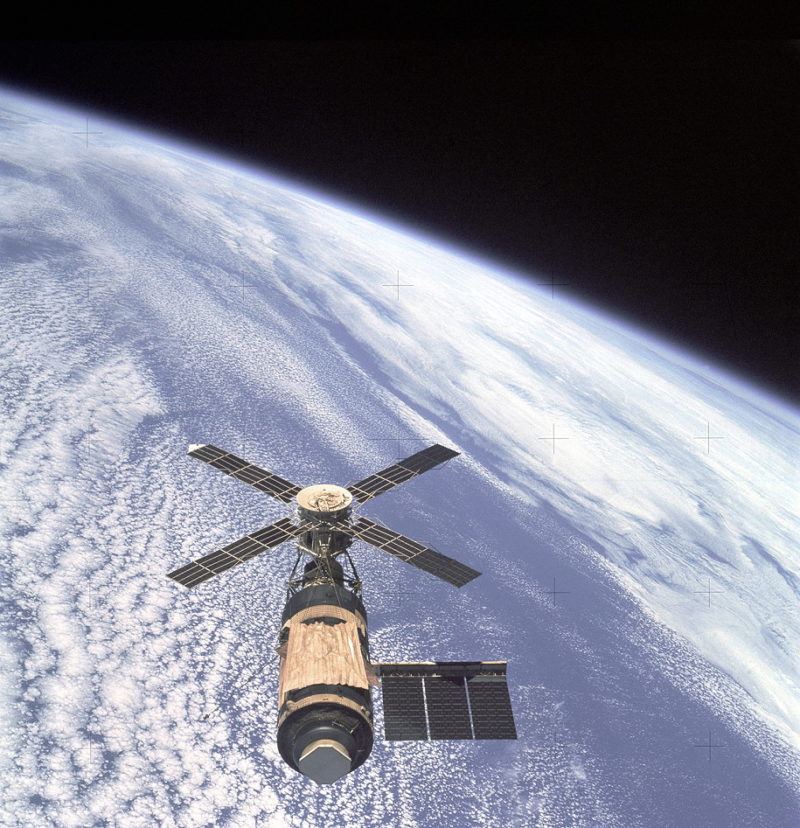
Half a century ago, today, America came within a whisker of losing its first space station. On the morning of 14 May 1973, the last in a generation of Saturn V heavy-lift boosters sat poised atop historic Pad 39A at Florida’s Kennedy Space Center (KSC), awaiting its voyage into space.
Visually, however, this Saturn V was quite distinct from its predecessors, in that it consisted of two stages—rather than the usual three—and in place of what would have been the S-IVB third stage was the Skylab space station, capped by a bullet-like shroud to facilitate protection against aerodynamic stresses on the vehicle during ascent. The ominous brewing clouds at the Cape that May morning, 50 years ago, carried great menace.
But everyone knew the Saturn V’s near-impeccable reliability: despite one troubled launch early in its career, it had flawlessly sent nine crews of astronauts safely to the Moon. It had also executed the nation’s first manned night launch and for its unmanned swansong it was expected that the great rocket would perform with its usual perfection.

The 363-foot-tall (111-meter) Saturn V had been sitting on the pad since April 1973, undergoing checks and countdown simulations. And Skylab’s first crew—Commander Charles “Pete” Conrad, Science Pilot Joe Kerwin and Pilot Paul “P.J.” Weitz—was on hand at the Cape to watch the station spear skyward, before themselves launching into orbit the next day for a world-record-breaking four-week mission.
At 1:30 p.m. EDT, the five F-1 engines of the Saturn V’s S-IC first stage thundered alive, shaking the Florida ground with 7.7 million pounds (3.5 million kilograms) of thrust. That made it the most powerful rocket ever brought to operational status.
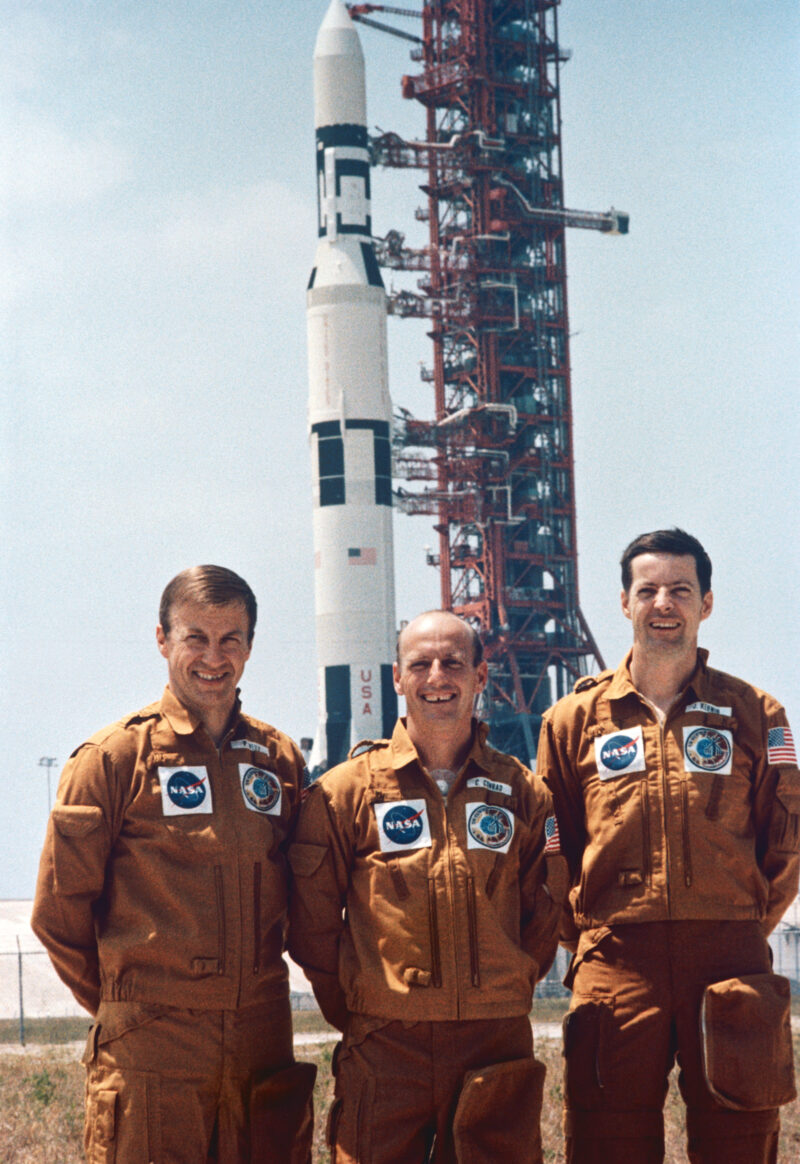
And the Saturn V’s record went unbroken until last November’s maiden voyage of the Space Launch System (SLS) and the Moon-bound Artemis I mission. After a few seconds, the mighty Saturn lumbered clear of Pad 39A and vanished into a deck of thick, iron-grey cloud, trailing an immense tongue of golden flame.
“It looked great,” Kerwin wrote in his book Homesteading Space, and fellow Skylab astronauts Owen Garriott and Jack Lousma headed to Patrick Air Force Base to pick up a T-38 jet for their return flight to Houston, Texas. As the pair walked towards their rental car, they met Rocco Petrone, then-head of NASA’s Marshall Space Flight Center (MSFC) in Huntsville, Ala., who notified them of “a few telemetry glitches” as the Saturn V made its way to space.
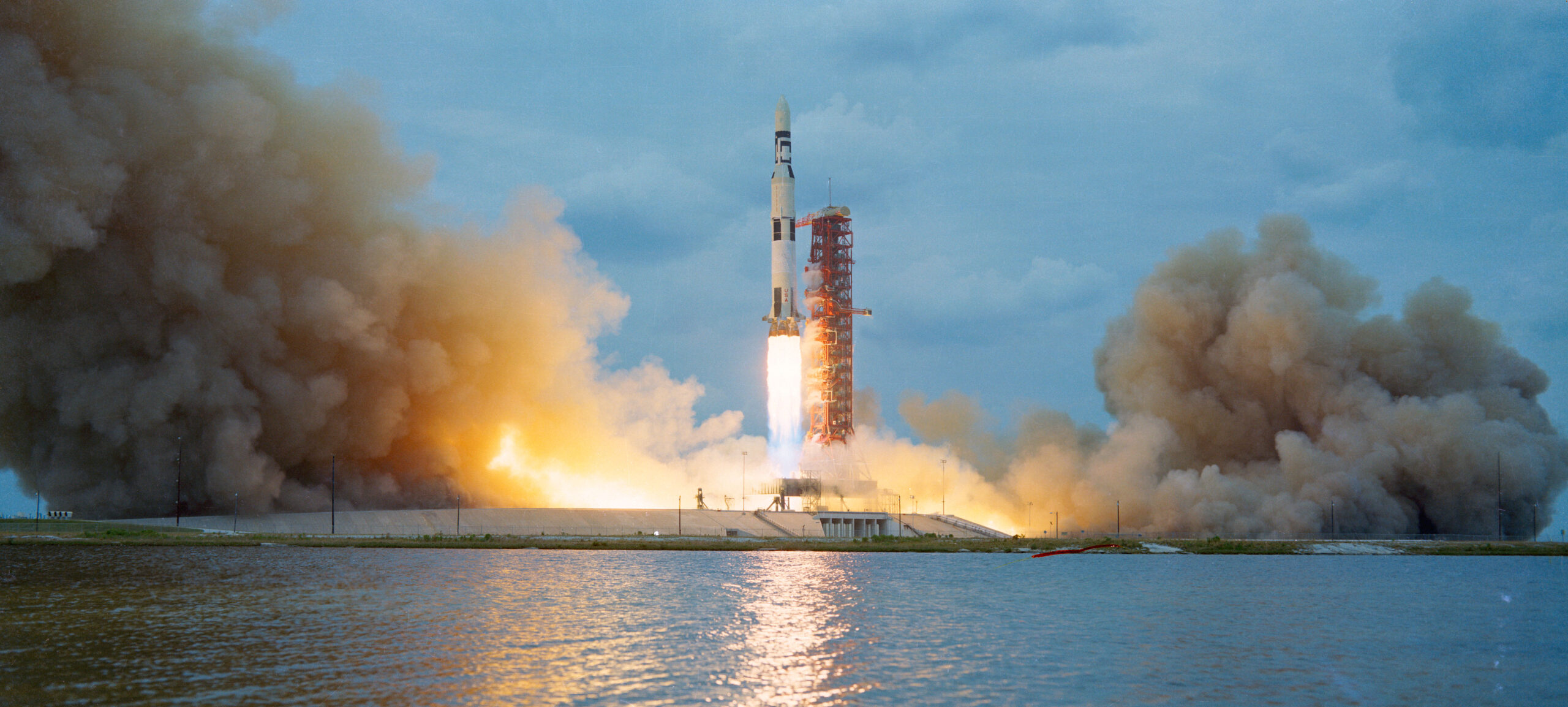
The astronauts did not ponder Petrone’s words for too long. And as they gained altitude on their return flight to Houston, Garriott and Lousma had every confidence that Skylab would soon settle smoothly into orbit.
A minute after leaving Pad 39A, the Saturn V had gone supersonic, as expected, before passing through a period of peak aerodynamic turbulence (colloquially nicknamed “Max Q”), during which atmospheric forces on the rocket reached their most extreme. It was a few seconds later that telemetry indicated that something was not right.
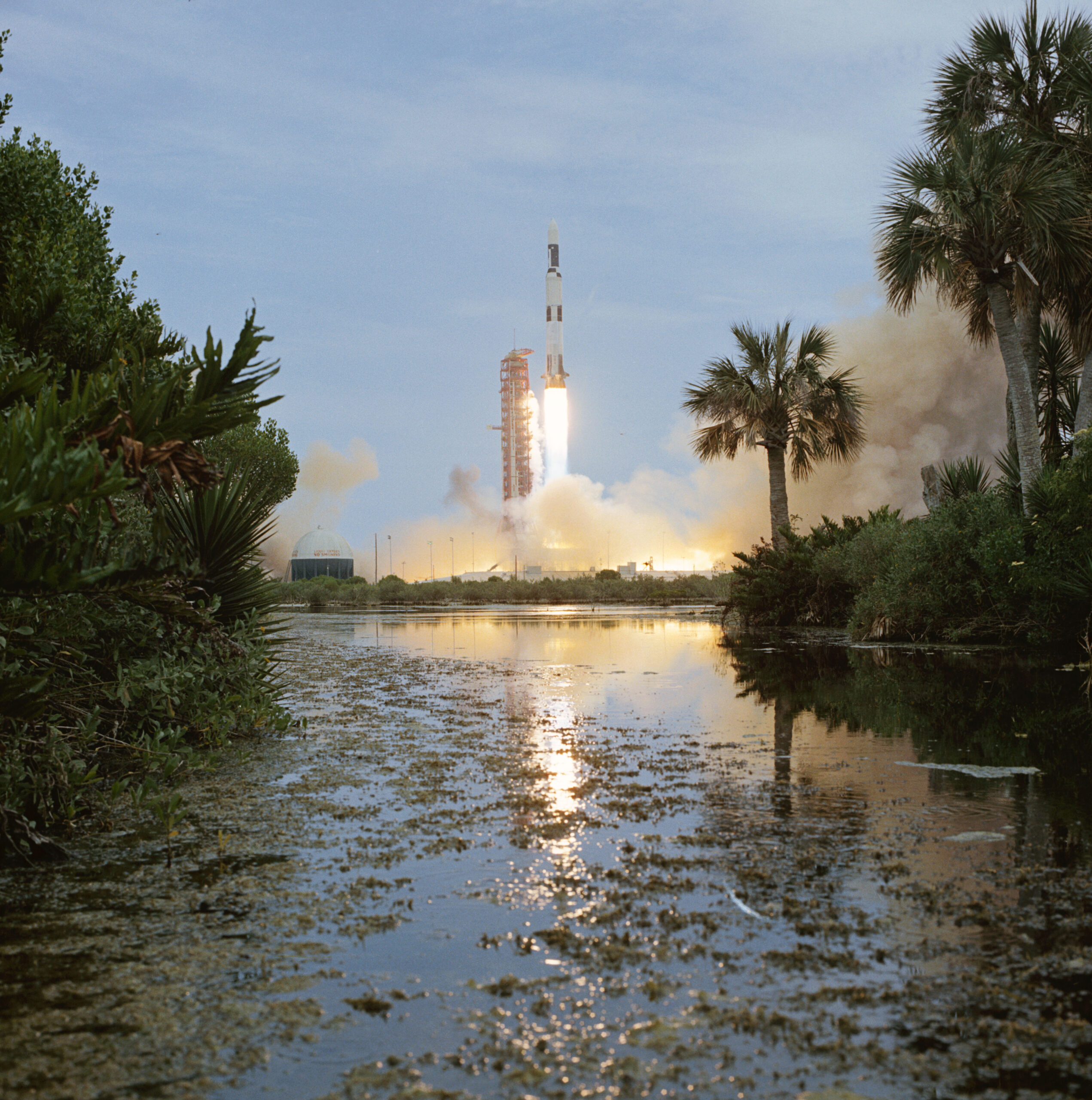
The data almost went unnoticed, but indicated that Skylab’s protective micrometeoroid shield and one of its twin solar arrays had deployed prematurely. If the telemetry was for real, and was not an instrumentation glitch, it signaled very bad news.
Under such extreme aerodynamic duress, the shield and the array would be torn off. And the space station’s future prospects would be thrown into doubt.
But the Saturn V continued to fly straight and true, its S-II second stage picking up the baton to boost Skylab towards low-Earth orbit. And at 1:40 p.m. EDT, the station was released from the rocket at an altitude of 270 miles (430 kilometers), about 1,100 miles (1,800 kilometers) downrange of the Cape, and high above the Atlantic Ocean.
The payload shroud was jettisoned on time and at 1:47 p.m. EDT, electric motors rotated Skylab’s Apollo Telescope Mount (ATM) out 90 degrees, locking it into place and unfurling its windmill of four solar arrays. Before launch, the ATM deployment was categorized as a major technical concern, yet it had been executed without a whimper.
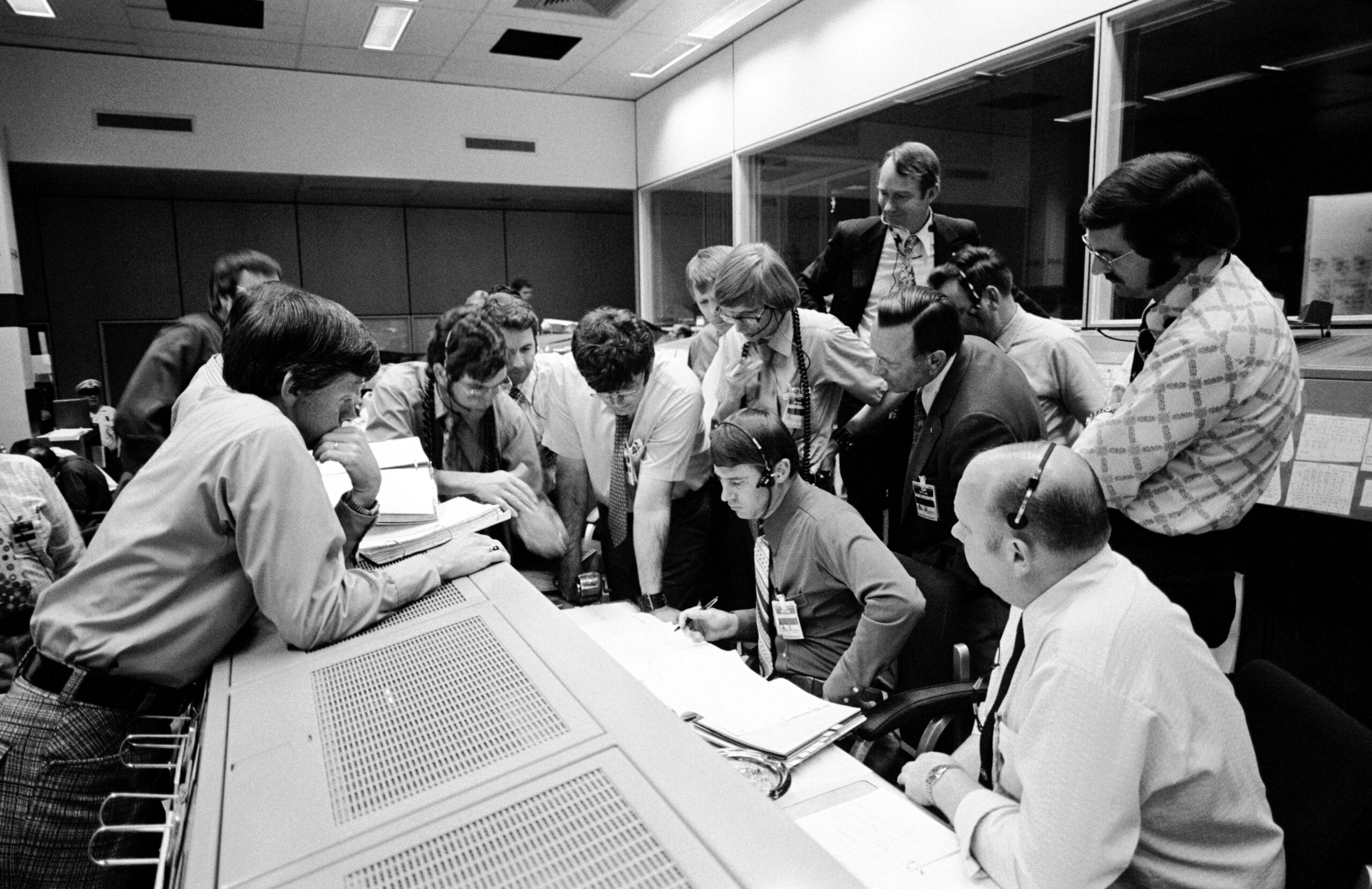
All had gone well. The mysterious bit of telemetry about the micrometeoroid shield and the No. 2 solar array almost went unnoticed.
Then, an hour into the flight, Mission Control spotted erratic signals from Skylab. By that point, the No. 1 and No. 2 arrays should have deployed, but the data suggested otherwise. Both arrays should have begun producing about 12.4 kilowatts of electricity—some 60 percent of the station’s power—but controllers were dismayed to see that levels were much lower, averaging only 25 watts.
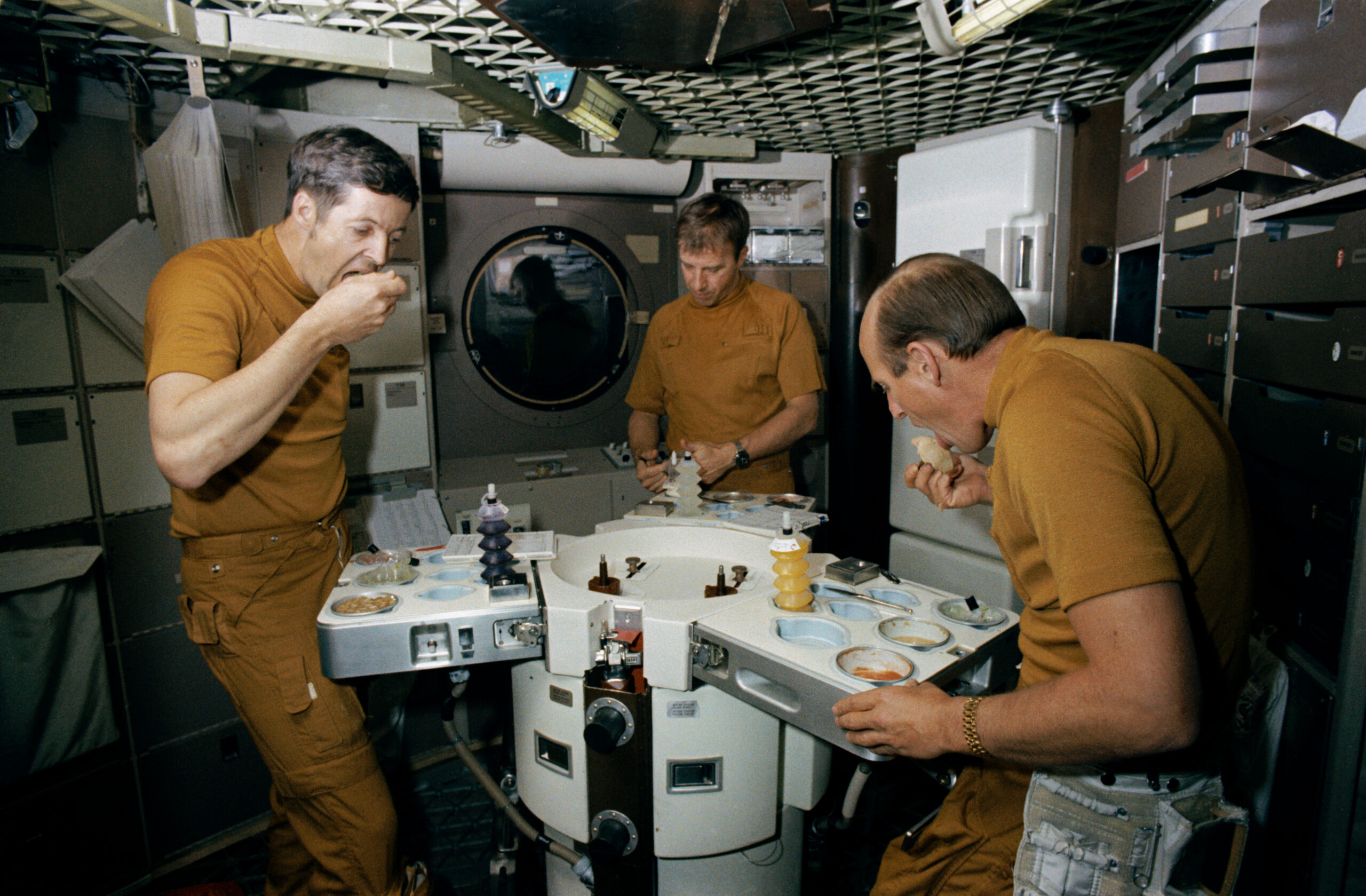
The data indicated that both arrays had released but had not fully extended into position, with temperature levels implying that one array had either been torn off or had suffered some kind of severe structural failure. As the team watched their data over the next few hours, they reached the inescapable conclusion that the micrometeoroid shield had indeed failed and a troublesome solar array had created a significant power shortfall.
But the micrometeoroid shield had a secondary duty to provide thermal control. Its external face carried a black-and-white pattern to absorb heat, whilst its internal face—and the hull of Skylab itself—was covered with gold foil to regulate heat flow between them.
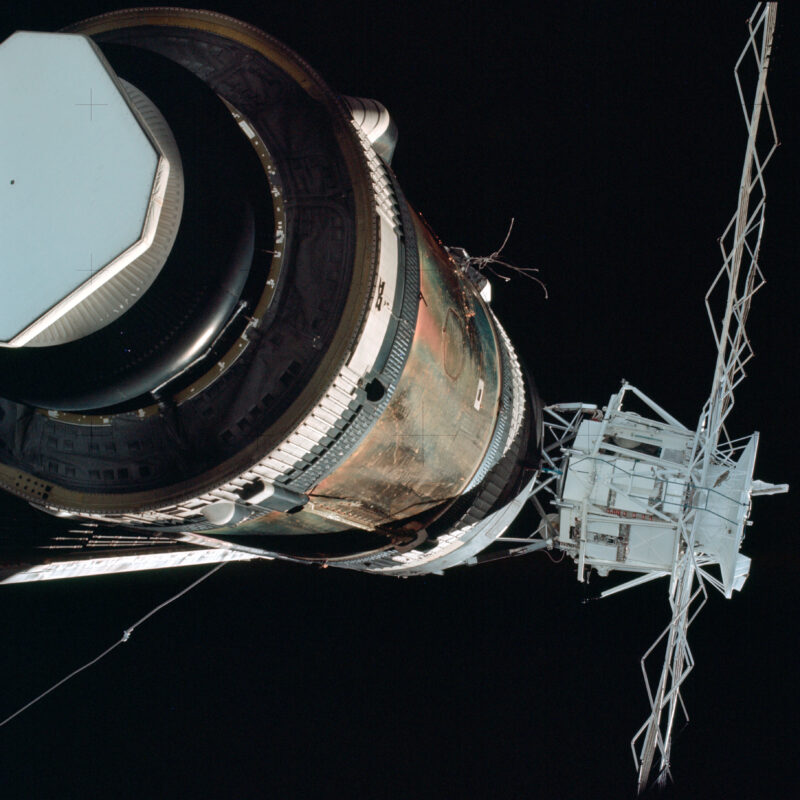
So long as the shield remained in place, the system would have thus kept the station on the cooler side of the comfort zone. But its absence would create uninhabitable conditions, with external temperatures already peaking at 82 degrees Celsius (179 degrees Fahrenheit) and internal temperatures of 38 degrees Celsius (100 degrees Fahrenheit).
Engineers confidently predicted that these temperatures would likely climb even higher, endangering the astronauts’ food stocks, camera films and perhaps even the physical structure of Skylab itself. Moreover, internal materials, including polyurethane foam and fiberglass, carried an elevated risk of “outgassing”.
And this could produce highly toxic contaminants like toluene diisocynate. At temperatures above 200 degrees Celsius (390 degrees Fahrenheit), toluene would begin to break down and release toxicity into Skylab’s atmosphere.
Eight hours after Skylab’s launch, NASA canceled the planned 15 May flight of Conrad, Kerwin and Weitz. Their Saturn IB rocket, with its Apollo Command and Service Module (CSM) atop, was poised on KSC’s Pad 39B, with the countdown clock—previously halted at T-14 hours—now recycled to T-59 hours and held indefinitely.

Based upon Skylab’s orbital geometry, launch options arose every five days and Conrad’s crew was rescheduled to fly no sooner than 20 May. Managers began to contemplate a 17-day “nominal” mission, with the astronauts spending the final 11 days of their flight in “minimal activity” to gather their required four weeks of medical data.
As the entire NASA and contractor workforce entered high gear to develop methods and tools to bring the crippled space station back from the brink of disaster, one thing remained certain: Conrad, Kerwin and Weitz needed to get to Skylab. And fast.




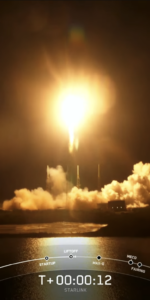

3 Comments
3 Pings & Trackbacks
Pingback:Celebrating The 50th Anniversary Of Skylab: America's First Space Station And Its Legacy - Science News
Pingback:Long-Awaited Ax-2 Mission Launches, Heads to Space Station - AmericaSpace
Pingback:“Absolute 2001 Experience”: Remembering Skylab’s Second Crew, 50 Years On - AmericaSpace